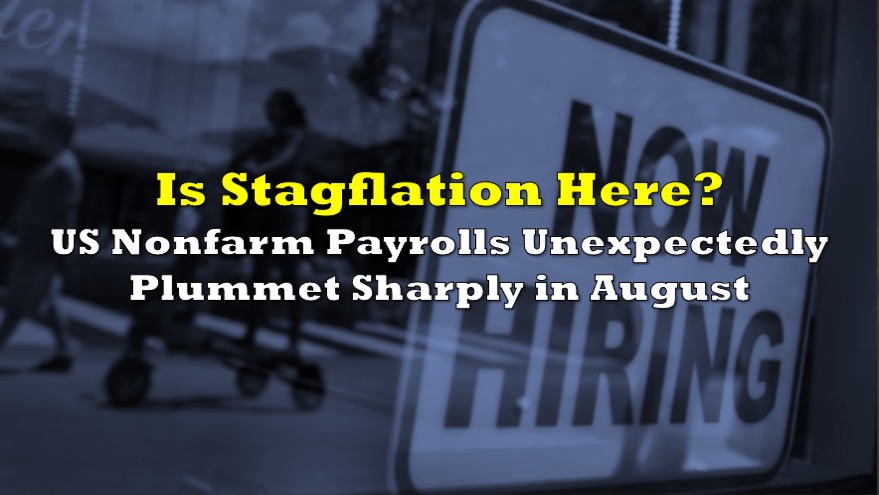US job growth was sent into a sharp decline in August, enormously missing even the most pessimistic of estimates, and giving rise to concerns that the US economy is rapidly slowing down even as inflation continues to inch higher.
On Friday, the Bureau of Labour Statistics reported that the US economy added only a paltry 235,000 jobs in August, following an upwardly revised 1.05 million in the month prior. Although the unemployment rate fell from 5.4% to 5.2%, the latest nonfarm payroll falls significantly below the 733,000 forecast by economists polled by Bloomberg.

There was virtually zero employment growth in the leisure and hospitality sector, while the retail trade, construction, government and health care sectors reported declines. Meanwhile, payrolls at manufacturing, warehousing, transportation, and professional and business services all increased. The workforce participation rate remained unchanged at 61.7% last month, and total payrolls still remain about 5.3 million below pre-pandemic levels.
The disappointing figures put the Federal Reserve’s potential hints for a tapering come autumn into question. Fed Chair Jerome Powell has repeatedly emphasized that a substantial improvement in America’s labour market needs to happen before the central bank even considers phasing out its $120 billion per-month asset purchases.
Analysts cited by Bloomberg have put the blame on the rapidly spreading delta variant for August’s huge payrolls miss, as Americans grapple with infection risk at high-contact work places, such as the leisure and hospitality sector. Indeed, the payrolls data shows average hourly wages rose 0.6% last month— nearly double the forecast, while average weekly hours remained unchanged at 34.7, suggesting that employers are having a difficult time filling vacant positions.
But, the jump in hourly wages will also propel inflation even higher, which is a seemingly paradoxical situation given the impending slowdown in GDP growth. Indeed, Morgan Stanley cut its third quarter GDP forecast from 6.5% to a mere 2.9%, citing ongoing supply chain disruptions and a reduction in stimulus spending on durable goods. In the meantime, while Jerome Powell decides his next move (which will likely be even MORE quantitative easing), the US economy fastens its seatbelts and prepares for what appears to be an oncoming stagflationary crash.
Information for this briefing was found via the BLS and Bloomberg. The author has no securities or affiliations related to this organization. Not a recommendation to buy or sell. Always do additional research and consult a professional before purchasing a security. The author holds no licenses.









